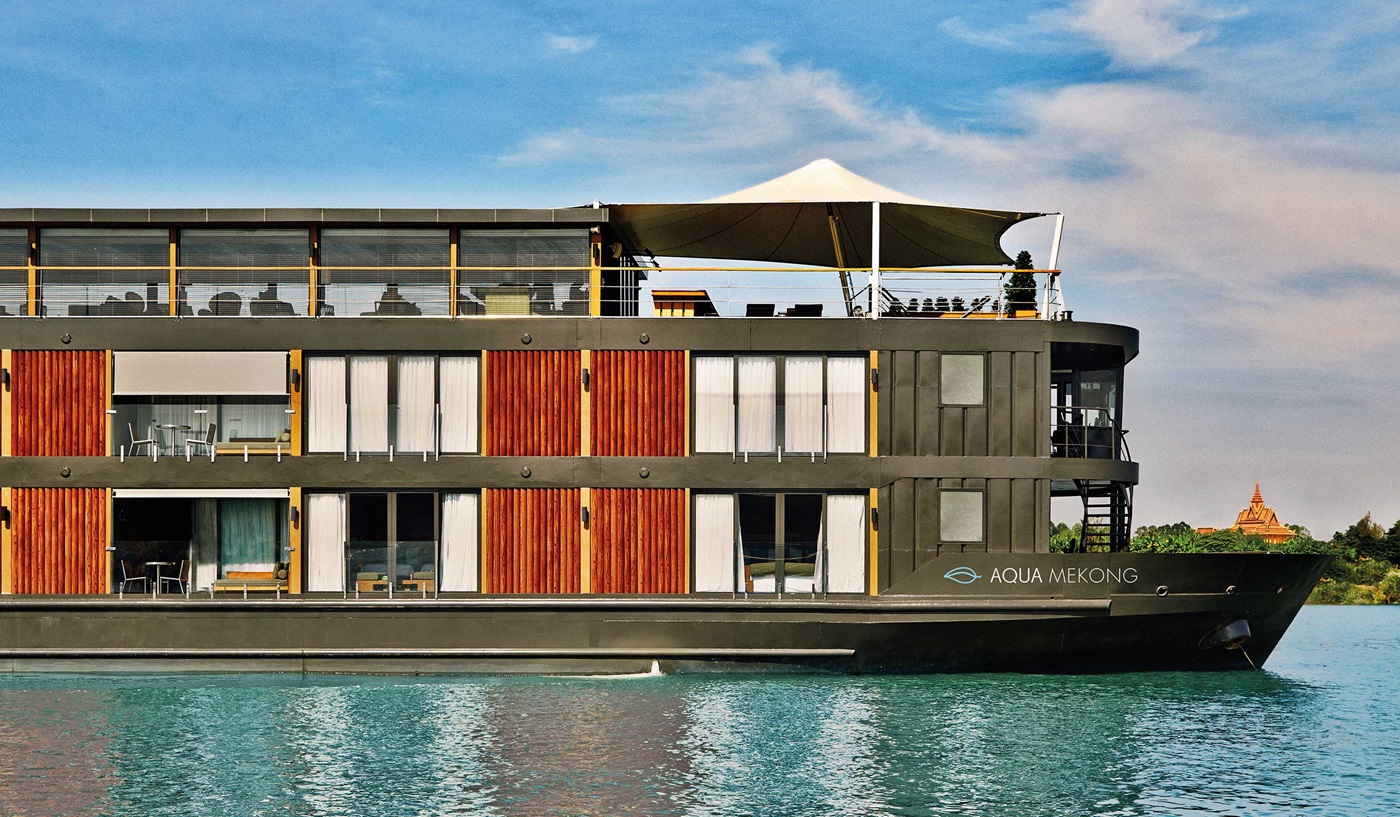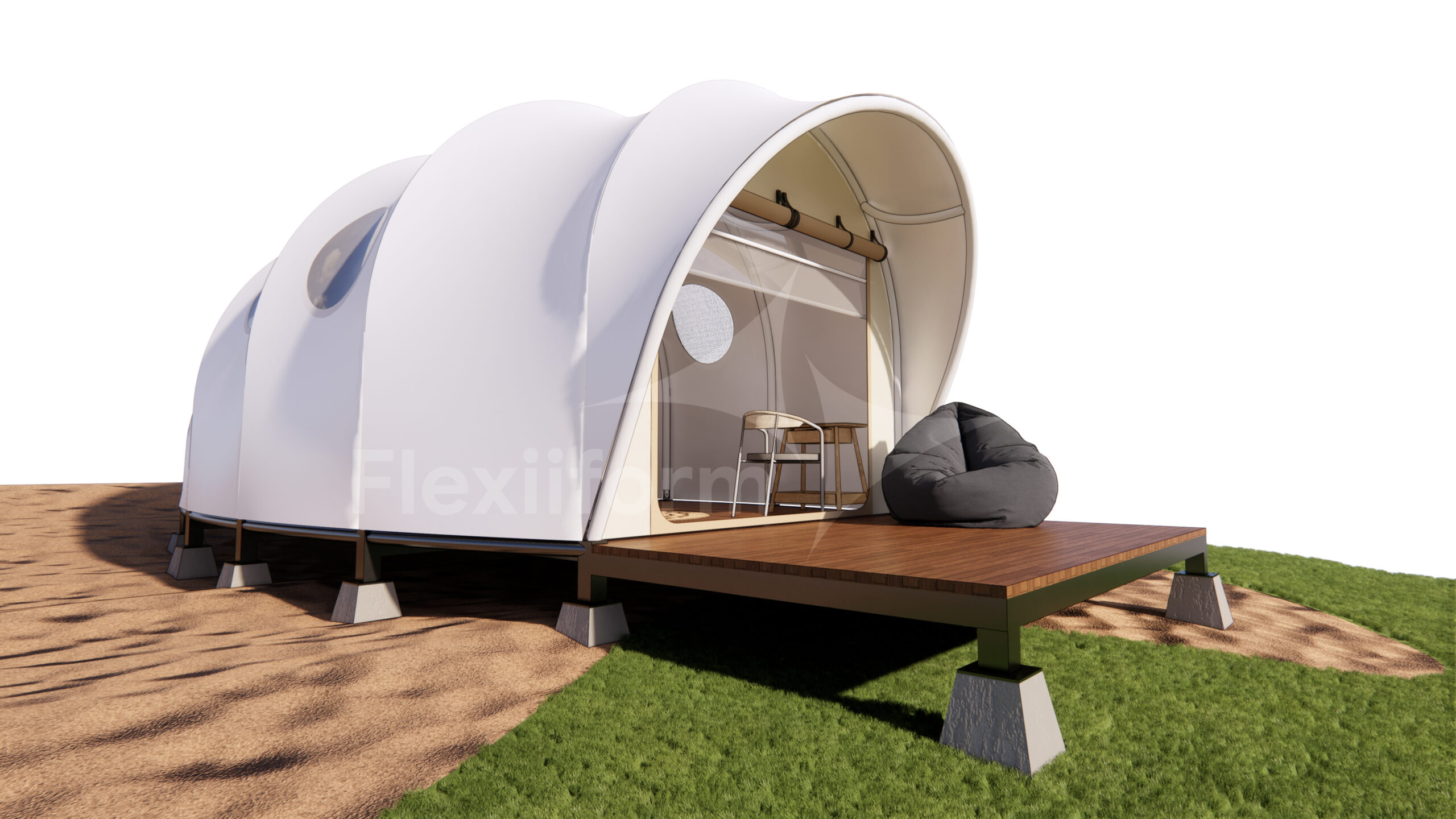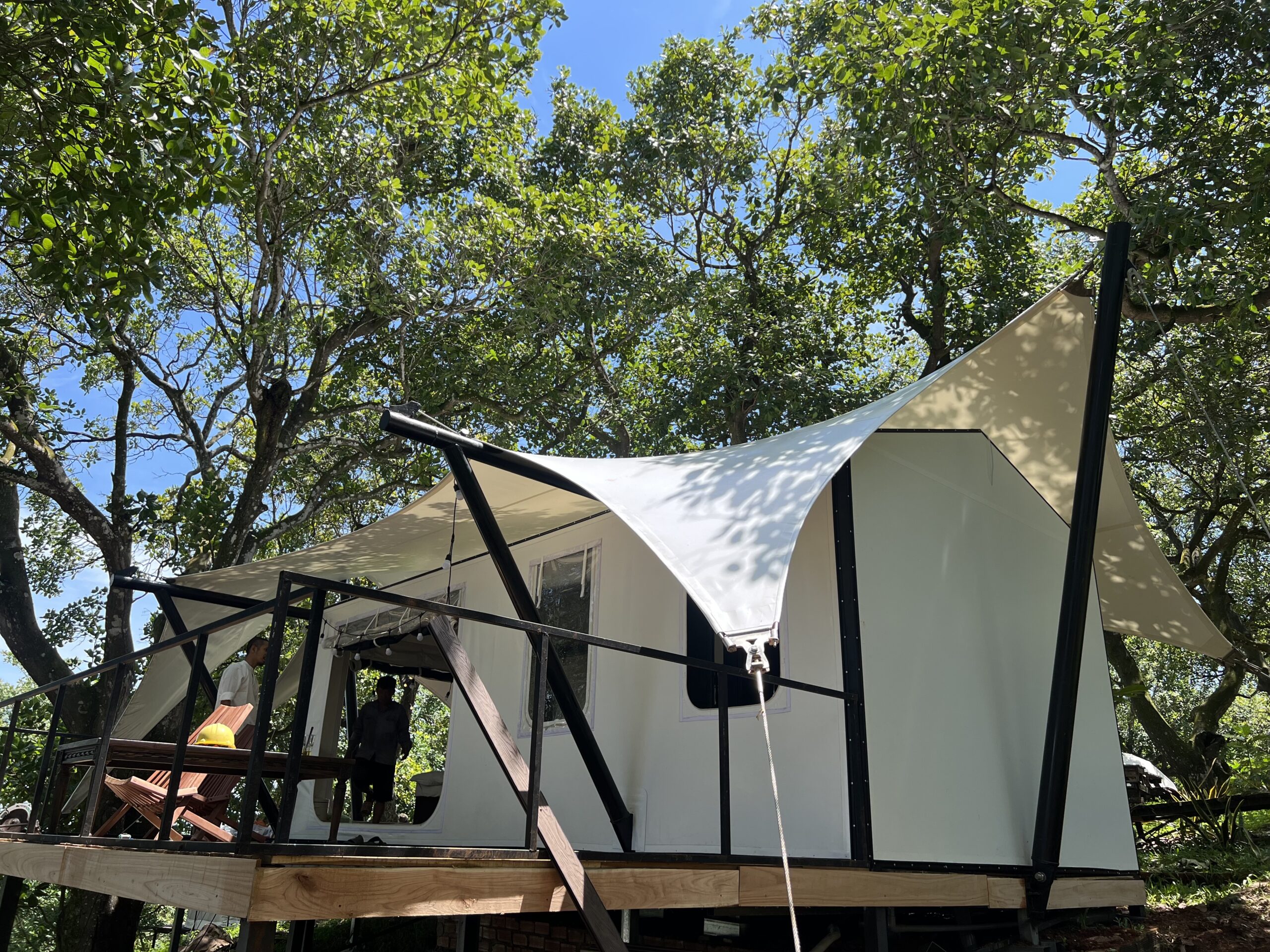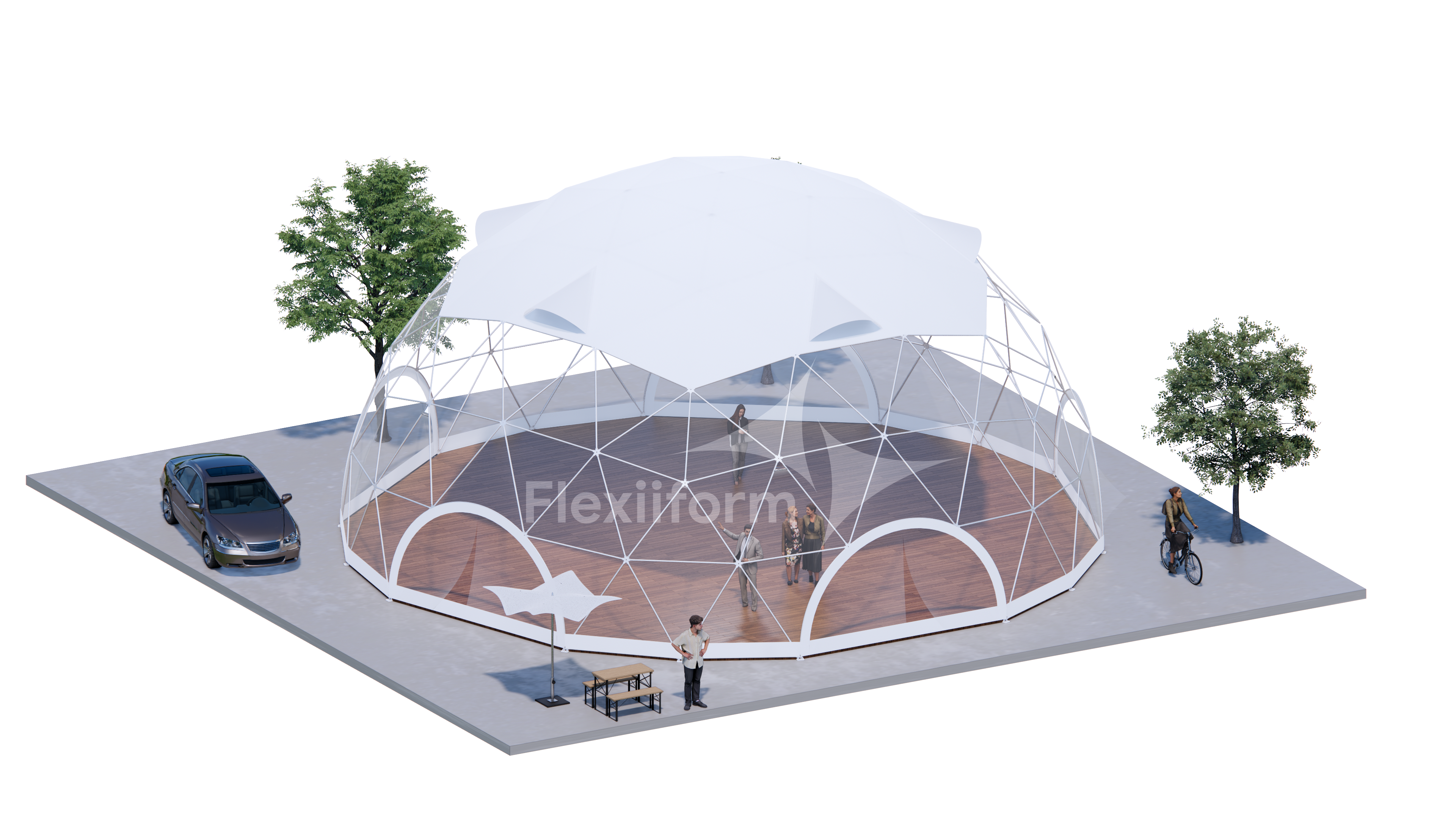Current Situation and Solution: Cable Tensioned Roof Structure – Elevating the Grandstand Canopy and Architectural Space
Tensioned cable roofs are an advanced roofing system, using basic tensioned fabric structures such as the horizontal (hypar), conical (conical), or vaulted (round) roofs. The outstanding feature of this system is the load-bearing structural frame supported by tensioned metal cables. These cables replace or supplement fixed iron structures such as masts or arms, making the system more stable. Typical applications include inclined columns, suspended roof systems or flying mast systems, providing solutions to optimize load-bearing capacity, reduce material costs and create unique architectural beauty for grandstand roofs and many other projects.
—
Technical Requirements Analysis & Solution Context
In the design of large-scale architectural works, especially grandstand roofs or large-span spaces, optimizing the load-bearing structure is a complex engineering problem. Traditional solutions using completely fixed steel frames are often costly in material costs, increase the load on the foundation and limit the ability to create elegant shapes. In particular, with flying mast structures or large-area roof systems, ensuring solidity and stability against the effects of wind, rain, or snow loads (for some climates) becomes very challenging. This context requires a lightweight, cost-effective structural solution that is flexible in shape and has the ability to optimally distribute forces.
—
Technical Solutions
Cable-tensioned roof structures address the above engineering challenges by exploiting the superior tensile properties of cables, combined with tensioned fabric materials.
Lever support cable
In the flying mast structure, the use of many arms distributed in different directions to ensure that the mast is fixed high up will cost a lot of material compared to using conventional masts supporting the ground. To solve this problem, cables are used instead, creating tension in many directions. The reaction force at the base of the mast is generated against the downward force at the top of the mast due to the tension of the canvas, at this time the function of the cables is no different from real arms. This helps to significantly reduce the material mass and cost of the structure.
Column support cable
For some large-area sail roof systems, the tension force acting on the edge column positions is very large, requiring a solid foundation and complex design and construction. To streamline the process, architects relied on the principle of force distribution according to the vector placement angle. The support column for the cable roof system is divided into a system of 3 inclined columns according to the "3-legged tripod" principle with a suitable calculated rotation angle. At this time, 2 inclined columns with the function of supporting force will be replaced by tensioned cables, helping to significantly reduce material costs while still ensuring stability and solidity for the entire system.
Special notes when designing
Most of the cables will support the load-bearing frame for the main stand roof system. Therefore, factors affecting the tension or load on the roof need to be carefully considered and calculated. For example, the impact of wind (depending on the region in our country, there will be 2 or 4 different wind seasons in different directions) or snow load in some northern provinces. Because the nature of the cables only bears the tensile force in the tensioned canvas roof system, while the arms or iron columns can withstand both tensile and compressive forces, the architect needs to carefully and accurately calculate the force vector directions and the force vector placement points to balance the forces distributed from the tensioned canvas, helping the roof system to be stable and sturdy. This requires high expertise in structural analysis and design.
—
Results and Performance Evaluation
The application of cable-tensioned roof structures brings outstanding efficiency to roofing projects, especially grandstand roofs. This solution not only optimizes the load-bearing capacity by effectively distributing the load, but also significantly reduces the mass and material costs of auxiliary structures. The ability to span large spans, combined with the elegance of the cables and the soft curves of the tensioned fabric, creates a unique, expressive and modern architectural beauty. This makes the projects more impressive, while ensuring safety and sustainability in complex environmental conditions. The flexibility in shaping (horizontal roof shape, conical roof shape, round roof shape) also allows for harmonious integration with all architectural styles.
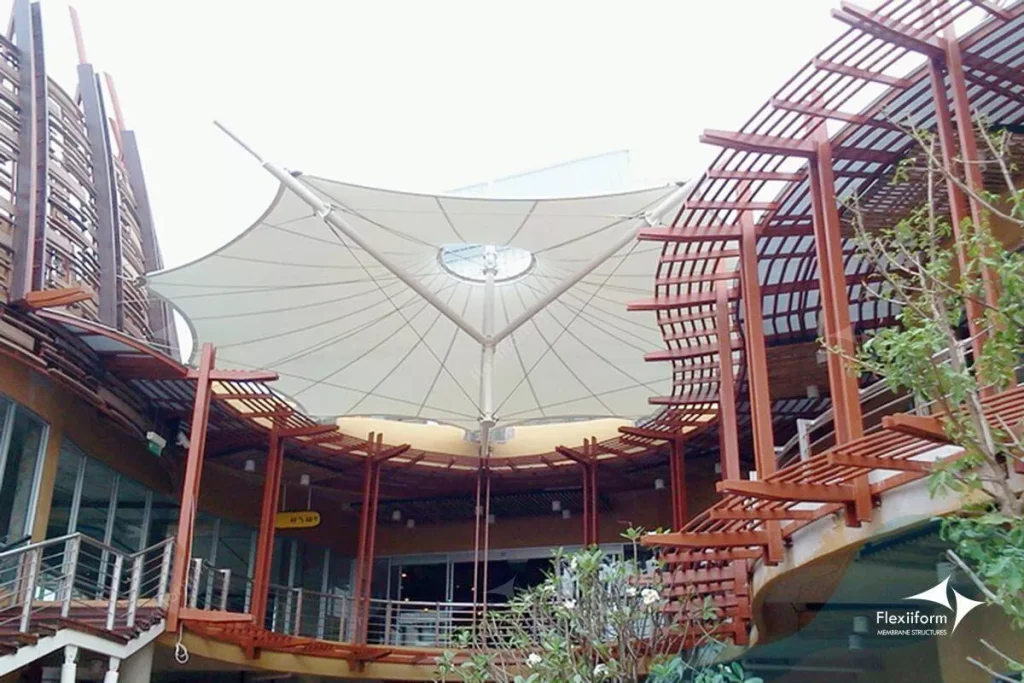
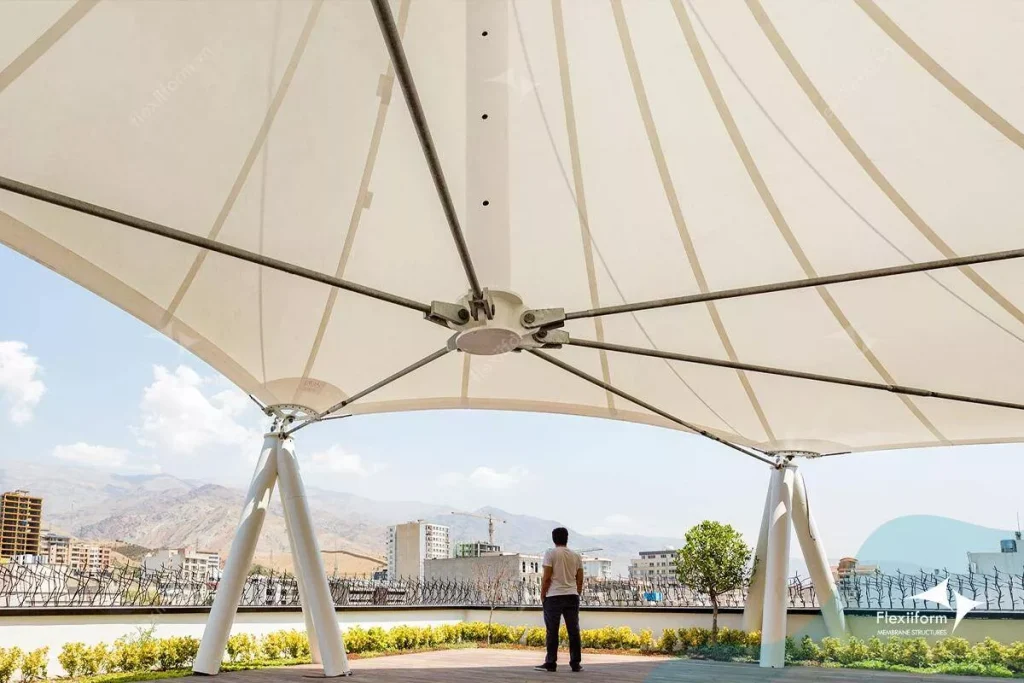
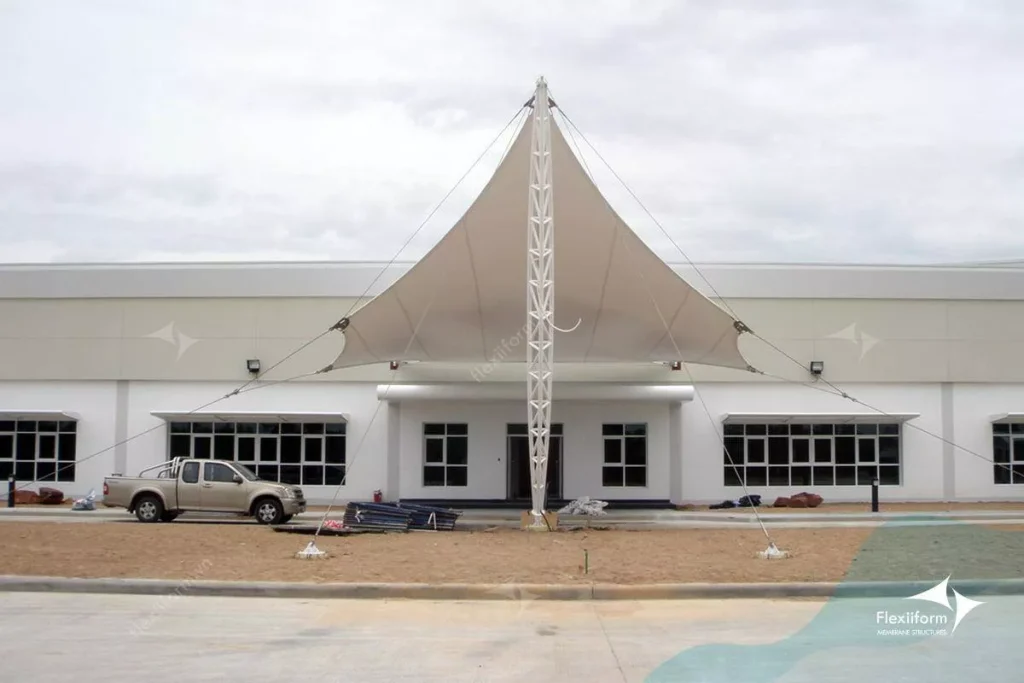


—
Contact Technical Consulting
Flexiiform is proud to be one of the leading units in Vietnam providing solutions for designing and constructing tensioned canvas. With its predecessor originating from the company FasTech, Flexiiform team gathers experts with over 10 years of experience in the industry along with a team of consultants providing the right solution according to the requirements for a variety of models and projects at home and abroad. We are capable of designing and constructing complex cable-tensioned roof systems, ensuring the highest accuracy, aesthetics and safety for your project. To learn more about Other Flexiiform products, please visit the website.
We are committed to providing in-depth technical solutions, suitable for all factors affecting tension and load, to bring about perfect and sustainable projects.
Contact information:
Company: Flexiiform
Phone: +84 8678 68830
Website: https://flexiiform.vn/
Fanpage: https://www.facebook.com/flexiiform/



